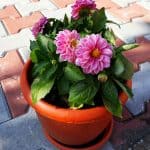Our site is reader supported, this means we may earn a small commission from Amazon and other affiliates when you buy through links on our site.
When you plant your dahlias be aware of the fact that they require fertile well-drained soil so you can add things to your existing soil such as farm manure or homemade compost to improve the soil and grit to help improve drainage while allowing the dahlias to absorb as much water as possible. If you don’t have free-draining soil they will probably still grow but will need to be lifted to ensure they survive the winter.
When planting dahlias plants, it should take place in the middle of springtime. Anywhere between the end of May and the start of June is best because these plants are particularly sensitive to cold weather and if you plant them too soon an unexpected cold snap takes place they could very well die. If your planting tubers then you can plant them outdoors around April and then by the time they shoot, the risk of frost will have passed.
Plant in a sunny location, keep well watered and they should do well. Below we go over each step in more detail from general care, to propagating to overwintering tubers so you can enjoy the flowers the following year.
Dahlia care
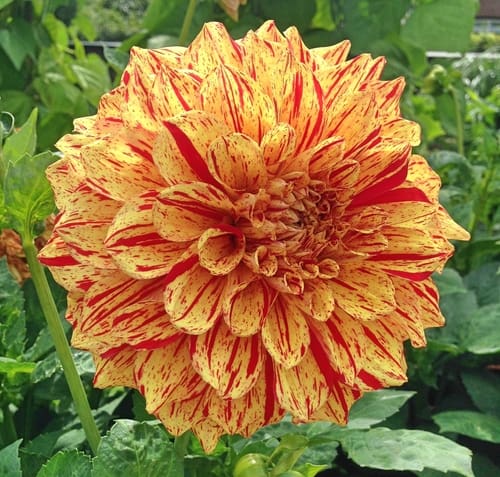
Plant in full sun for the best show
Dahlias do best with full sunlight so it’s important to plant them somewhere they will receive an average of 7 hours of direct sunlight so a sunny spot in the garden is perfect. It’s best to pick a location in your garden that gets Sun from morning through midday if possible. If you live in a particularly warm area further south, protection against hot afternoon sun is perfectly fine.
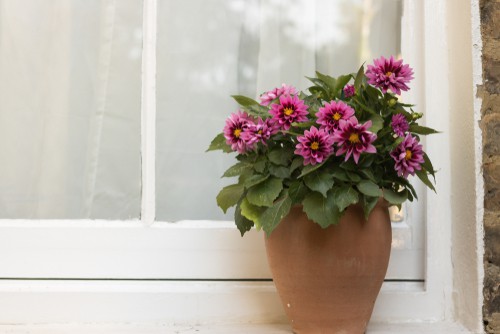
Stake tall varieties to support heavy flowers and stems
If you are growing in the ground or in a container and you have chosen a very large variety, you might want to integrate a stake or cane against which the plant can get some support and if you choose to do this, wait until the plant reaches 30 centimetres in height and then use something like twine to secure the plant at 30cm intervals all the way up as it grows. For taller plants grown in larger pots, this is nearly always essential to stop them flopping over.
Feeding Dahlias
Throughout the blooming season, it is beneficial to give your dahlias fertiliser. You can choose whichever variety of fertilizer you want but it’s best to have a combination of 8 – 24 – 16. With dahlias, in particular, you want a high amount of phosphorus and potassium. Be sure to follow the labels when applying any fertilizer. We recommend using tomato feed every 2 weeks as this is perfect and helps promote better flower and is often much cheaper than other feeds.
If you feed other plants in your garden with a general liquid feed once a week, then this is also fine for your dahlias.
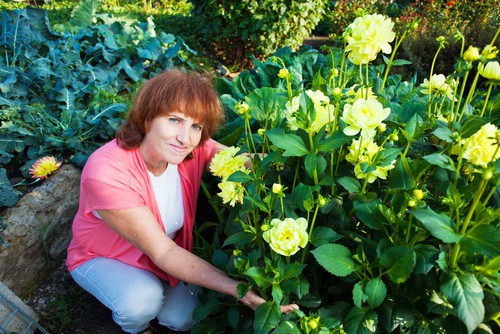
Watering Dahlias – Keep soil moist but not wet
Dahlias require lots of water and during dry warm periods will need watering daily, that being said, dahlias prefer to be watered well less frequently than watered lightly but daily. They prefer a moist soil so the aim is to keep the soil moist but not too wet as they can start to rot. this is why they grow best in well-drained soil.
Dahlias that are grown in pots will certainly need more watering and do dry out very quickly so always keep an eye in the watering daily.
Deadheading and pinching out dahlias to promote flower production
Part of your maintenance should include deadheading and pruning regularly. On average flowers will come into existence and bloom beautifully for about 5 days and then they start to fade. If you want to encourage more blooms you can cut away the fading flowers once they’ve reached the height of their beauty. Around the middle of July, you can remove some of the bottom leaves without ruining the look and shape. This helps to increase air circulation so there’s less risk of mildew throughout the rest of the season as air circulation is key. If you prefer a bushier growth rather than very tall plants, you can always pinch back some of the shoots early in the season which will encourage new bushy growth forming a more compact plant which in turn will produce more flowers.
Overwintering dahlias
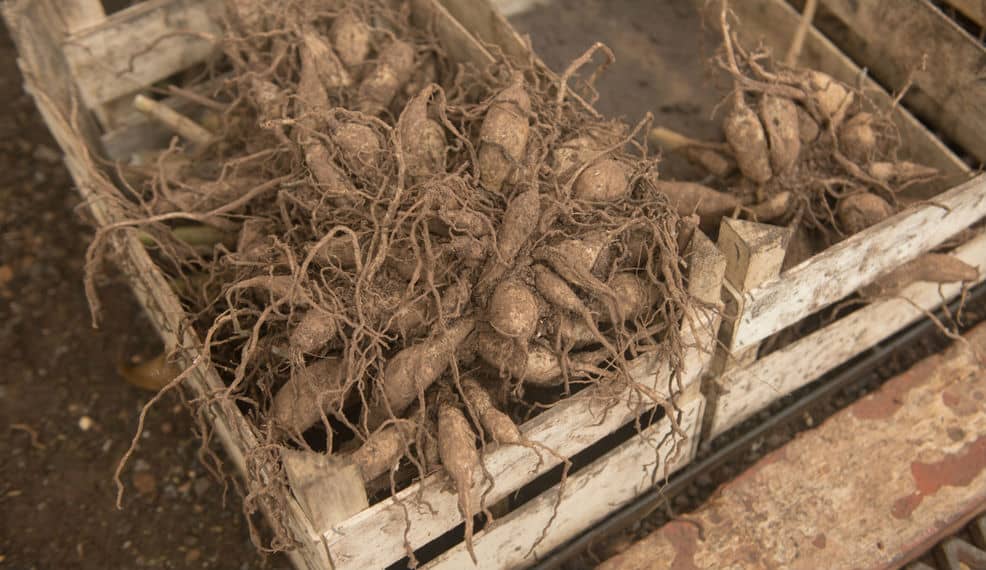
Overwintering dahlias in the garden
Dahlias are not frost hardy, this means a little care needs to be taken if you hope to grow them again the following year. There are two ways to overwinter tubers, the first is to leave them in the ground. This can only be done in areas where you won’t get hard prolonged frost which is usually further south in the UK. Simply cut back after the first frost and mulch with a few inches of mulch or compost, this will help retain moisture and protect the tubers from frost. For this to be an option your soil also needs to be free-draining.
Overwintering dahlias by lifting them
When winter approaches it is time to prepare your plants. If you wait too long and leave your dahlias outside during a hard freeze it can kill them as dahlia tubers are susceptible to frost. You want to cut back your dahlias so they are just 15cm above the soil after the first frost and started to turn the leaves black.
Give them a week or two to harden and after 2 weeks carefully dig them out of the ground using a garden fork or the container in which they were grown. Remove any soil from the tuber and let them dry out in a cool dry place for around a week. Once they are dry, put them in a container packed with peat or wrap them in newspaper and store them someplace cool and dark throughout the winter but where the temperature won’t drop below freezing. In springtime, you can replant your tubers.
You can read a more detailed guide on overwintering dahlias here
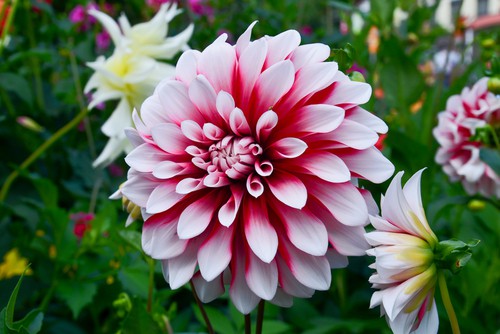
Pest and diseases
If you are having trouble with pests or fungus such as mildew, it is important to use fungicide or insecticide. Dahlias are susceptible to a great many pests such as aphids, slugs, especially young shoots, spider mites and more.
Watch out for aphids attacking the new shoots
At the first signs of pests such as aphids including greenfly, use an insecticide to prevent any future infestations. You can also try spraying soapy water which can also be effective. Find a chemical product that is labelled for flowering plants specifically and then follow the directions carefully.
Spread slug pellets as new growth emerges
When they first start to shoots, look out for slugs and snails, we recommend putting some slug pellets down ready to help prevent the foliage becoming eaten by slugs.
Propagating dahlias from cutting
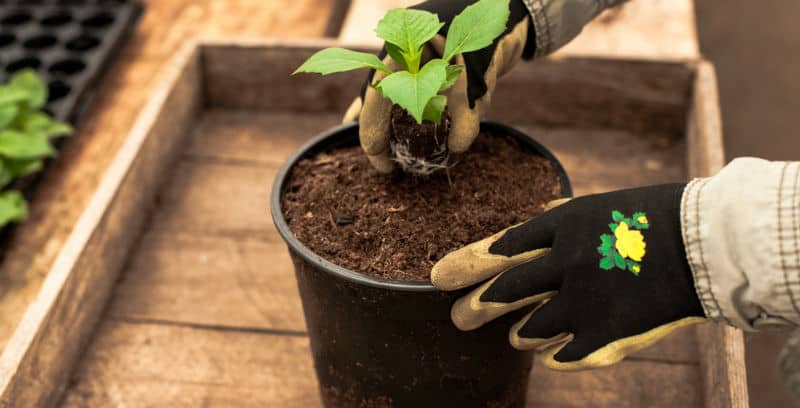
Get tubers ready for taking cutting
One of the best ways to propagate dahlias by taking stem cuttings in spring. For this, you can take cuttings from dahlias and get between 5 and 10 plants from a single plant. Cuttings are best taken from the dahlia tuber and taking a small slice of the tuber with the cutting but you can also take normal cutting by cutting just under a node which is the joint where the leaves sprout.
Plant tuber in February
If you have overwintered dahlia tubers you can bring them out of storage at the beginning of February. Fill whatever tray or pots you are going to use with a mixture of peat moss and potting compost. You want to be sure that you have several drainage holes and you have approximately 15 centimetres of death. You want to place your tubers approximately 15 centimetres apart with the tuber just above the surface so you can see the top of the tuber.
Place them in a warm area such as a greenhouse with a little heat. You want to keep your soil slightly moist and watch for the Dahlia eyes to appear, a process that takes about week or two.
Taking the cutting
After the new shoots that emerge from the tuber have three or four sets of leaves you can take a cutting by slicing right down to the tuber and cuttings a tiny piece of the tuber with the cutting and place it in a pot, 9cm are ideal and we recommend you insert 3 cutting around the edge of each pot. You can also try showing them in plug trays or jiffy 7s.

Be patient and wait for cutting to root
It can take about three to four weeks for your cuttings to properly root after which you can plant them outside if the risk of frost has passed, usually the end of May or transplant them in a larger pot. You can usually tell when they have rooted as they will produce new leaves and roots will start to show at the bottom of the pots.
Recommended varieties
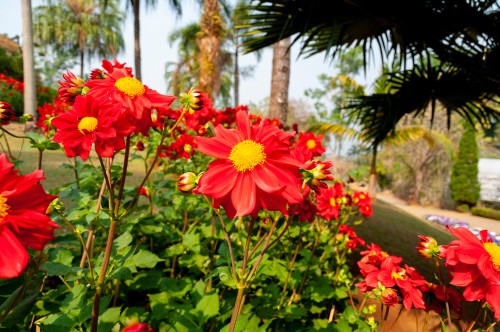
There are many varieties out there for each size preference you have. For large, tall varieties, you can pick Twinings After 8, or Hadrian’s Sunlight. Smaller, dwarf varieties include Bednall Beauty and Bishop of Llandaff which is larger than smaller bedding dahlias but not as tall as some of the larger varieties.
Image credits – Shutterstock.com

